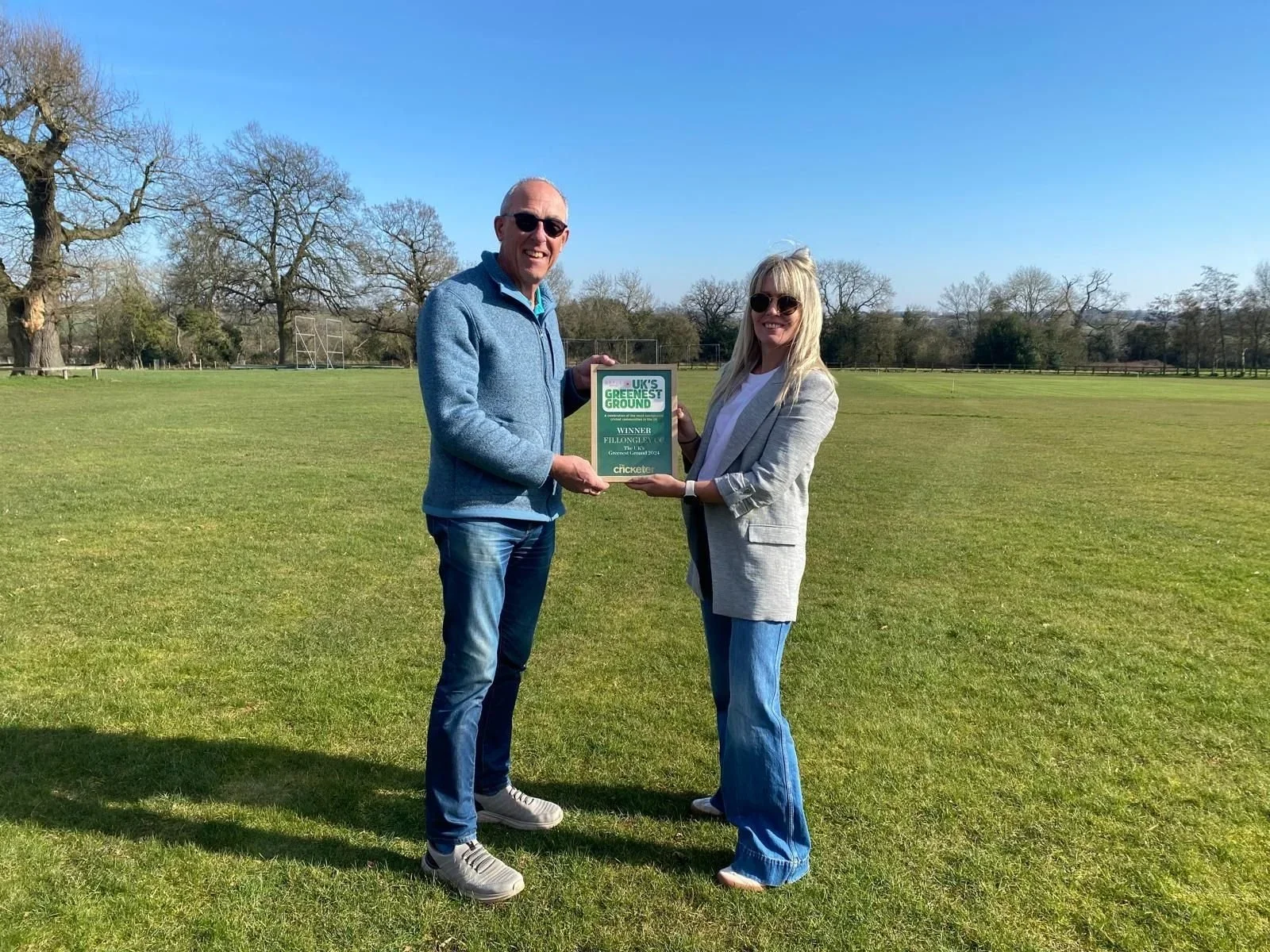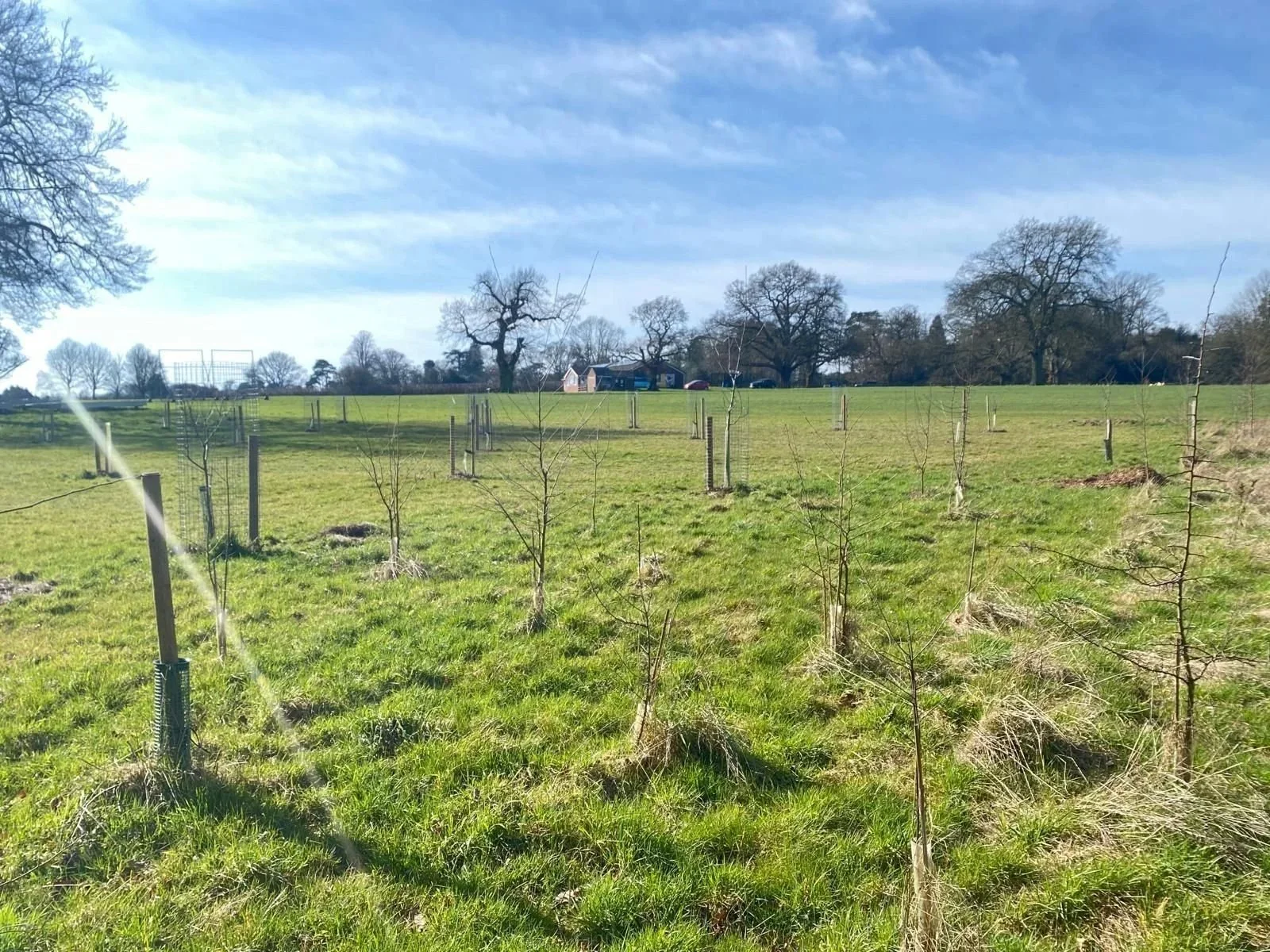Fillongley CC - Cricket at the COP30 Climate Conference
By Tanya Aldred
When Fillongley Cricket Club started digging out a neglected pond full of rubbish, they were not thinking of the international stage. But seven years on, the 2024 winners of the Cricketer/Ortus Energy’s Greenest Cricket Ground competition are currently featuring at COP 30.
It all started back in 2018 when the club had the opportunity to buy their own ground, with other land, including a pond, thrown in. The club set up a sustainability sub-committee, with the intention of trying to stop flooding lower down in the village and attracting more wildlife. They also joined forces with the Warwickshire Wildlife Trust.
Soon volunteers were planting hedging, 200 metres worth, trees to fit in with the local ancient Arden forest, and a wildflower meadow - all of which help absorb excess water to prevent run-off flooding during prolonged rain periods. Voles appeared in the meadow, coots appeared in the cleaned-out pond - deer, buzzards, red kites, barn owls and a kestrel started visiting.
Trees planted on the boundary at Fillongley CC
The club tackled the human ecology too – first with the quick wins: switching to LEDs with motion sensors in the clubhouse, adding insulation to a water tank, timers to the showers and improving the sorting of their recycling.
They also installed an 18 panel 7kW photovoltaic system to the pavilion roof, with a battery, and a charger to power the groundsman’s car and the club's mowers when they eventually switch to electric. The solar panels, operational since last May, have saved money and Co2, plus given the club an income stream.
We caught up with the club’s driving force, Stephen Gardner, as COP 30 started. He had been surprised, but delighted, to be contacted by the team organising the UK’s contribution in Brazil. They wanted a 90- second “best practice” video of how local sport could contribute to the fight against climate change. The silent video – featuring Joe Hoot the barn owl and some beautiful hares will play on a loop at the UK stand.
Since winning The Cricketer/Greenest Ground competition 2024, the club have also featured in a documentary by TNT Sports and were a runner-up in the Coventry and Warwickshire radio Making a Difference awards.
The 2025 summer was spent “desperately watering the trees we had planted in the spring, as it was so dry,” says Gardener. “We planted 30 and I think we’ve only lost one so I don’t think we’ve done too badly. We actually planted a peach and an almond tree with the thought that by the time they are fully grown the summers will be so hot they will support them.” A bitter-sweet thought but, in the meantime, the blossom smelt divine.
There have been frustrations. Gardner looked into adding a small wind turbine to the club roof alongside the solar panels, to keep the fridges charged up during the winter, but hit a red-tape barrier. “It seems it is not possible to buy a small turbine because no-one who makes a small wind turbine has MCS accreditation, which is needed. We would have to spend £30,000 to buy a turbine that is much too big for our needs.”
In the meantime, he is hunkering down for the winter, letting things grow, while the club flies the flag for green cricket clubs all over the UK.
Want to do more to make your cricket club more sustainable and nature friendly?
Do take a look at Fillongley's inspirational video (above) and share with those at your club or community who are interested in making similar transitions to sustainability. You can also find plenty more inspiration in our other blog posts and lots of information in our resources. Keep up to date with all things cricket and climate by signing up to our newsletter below.


